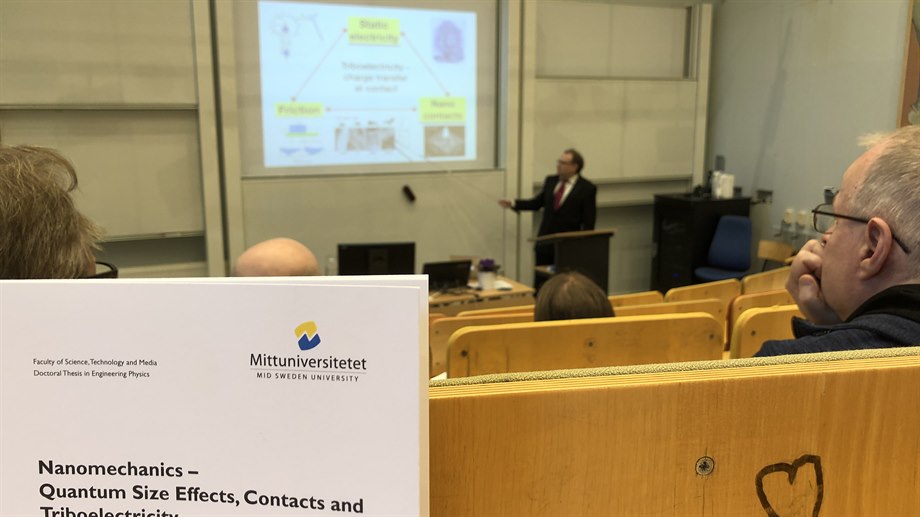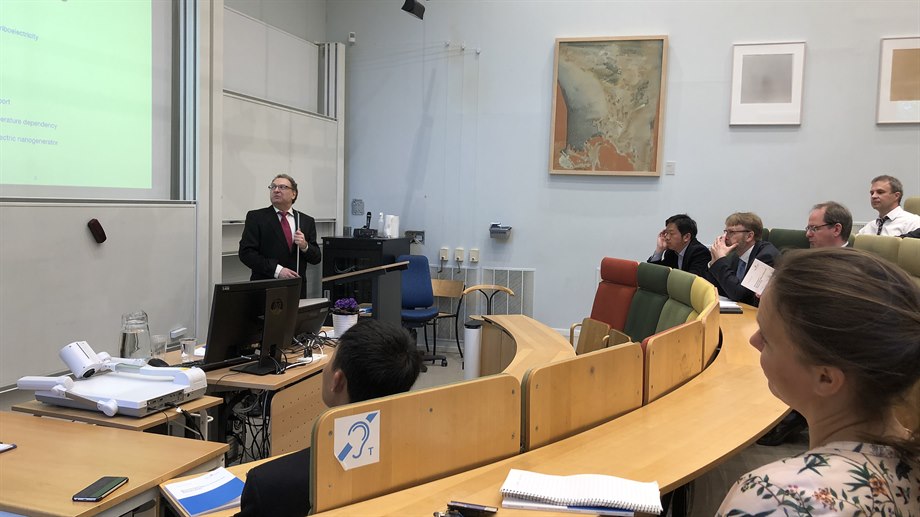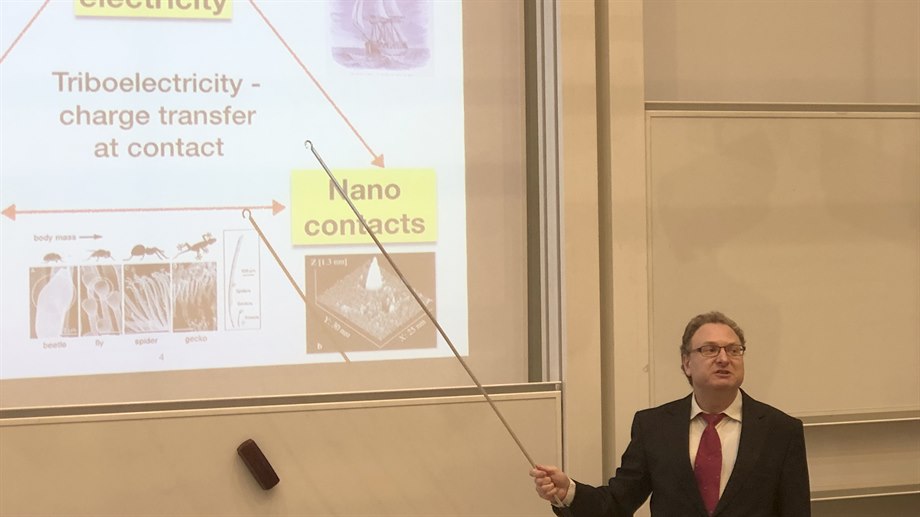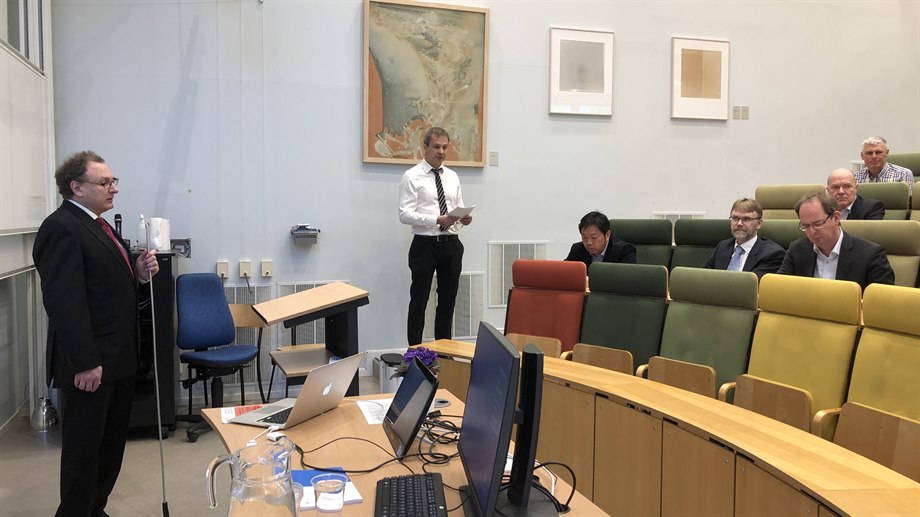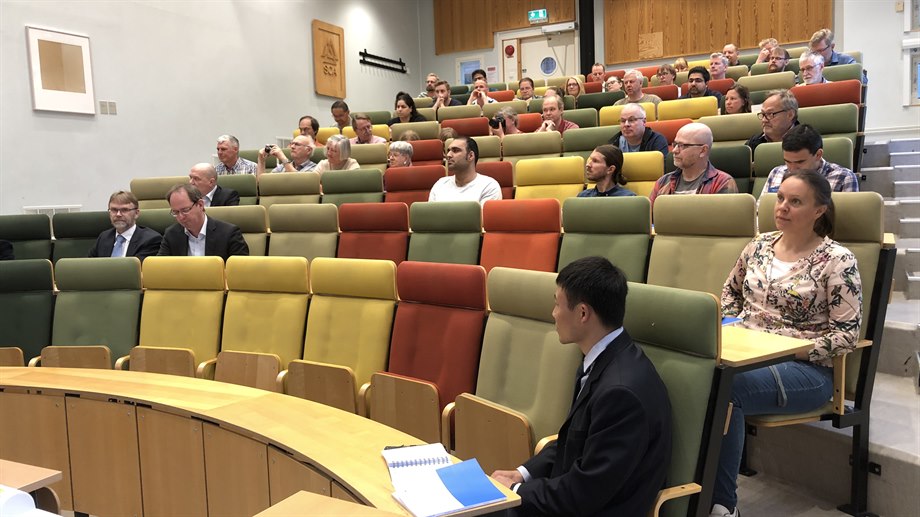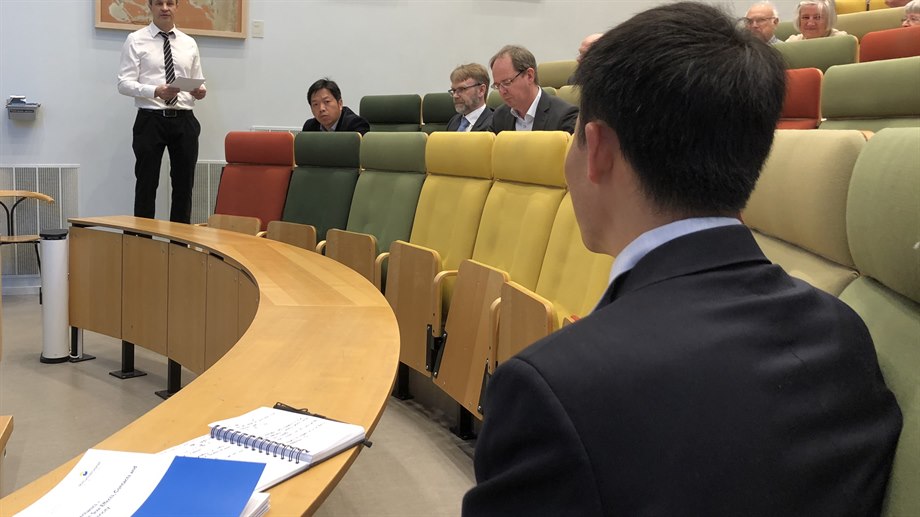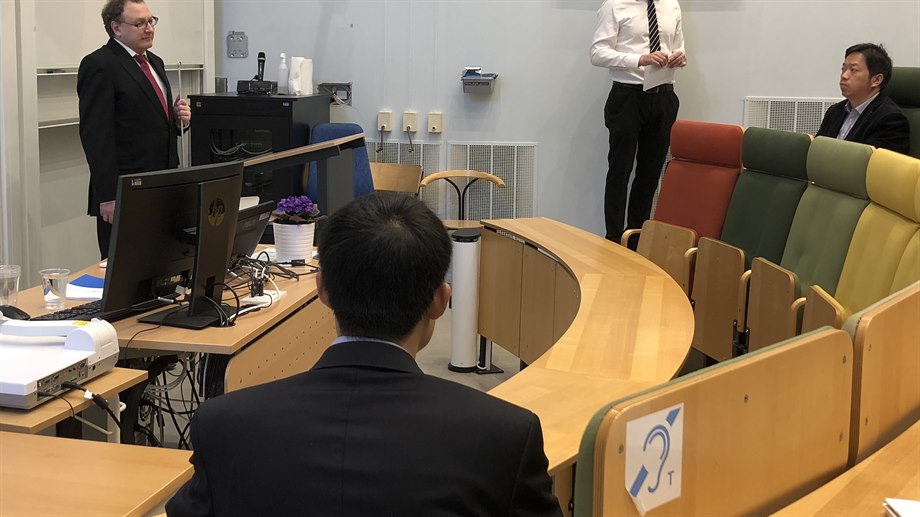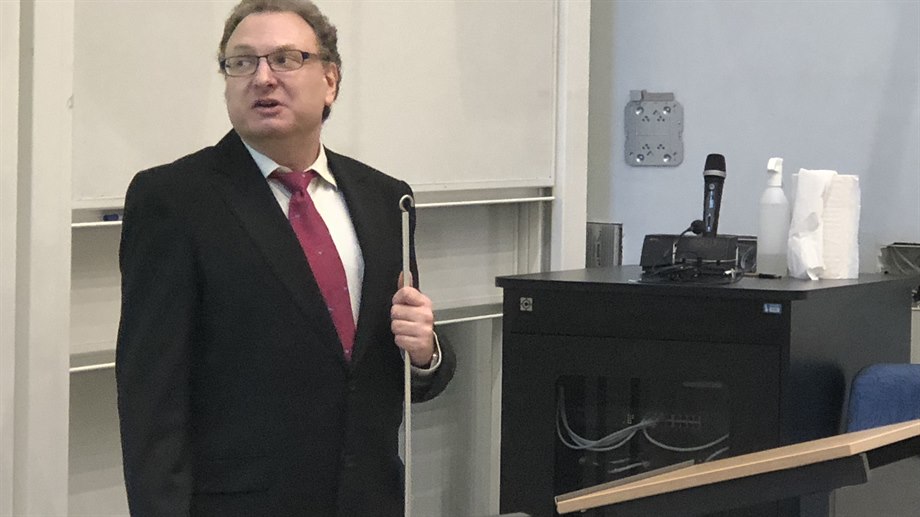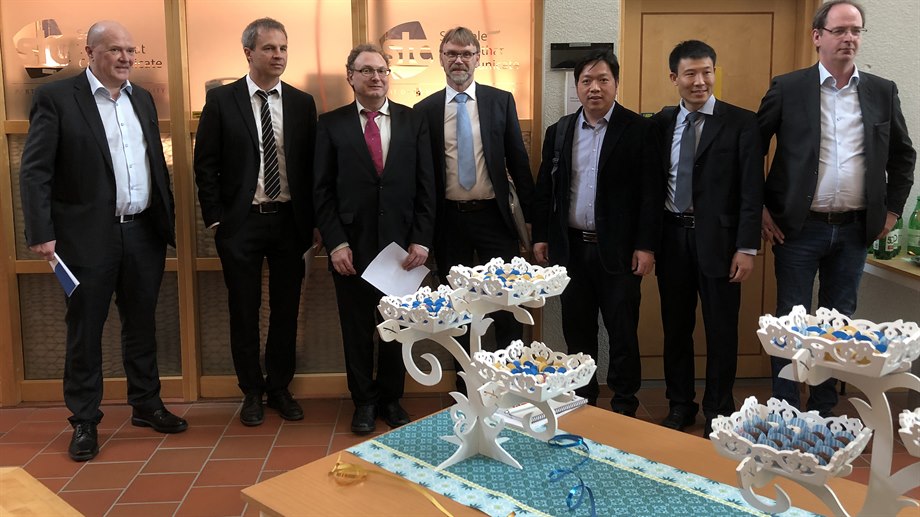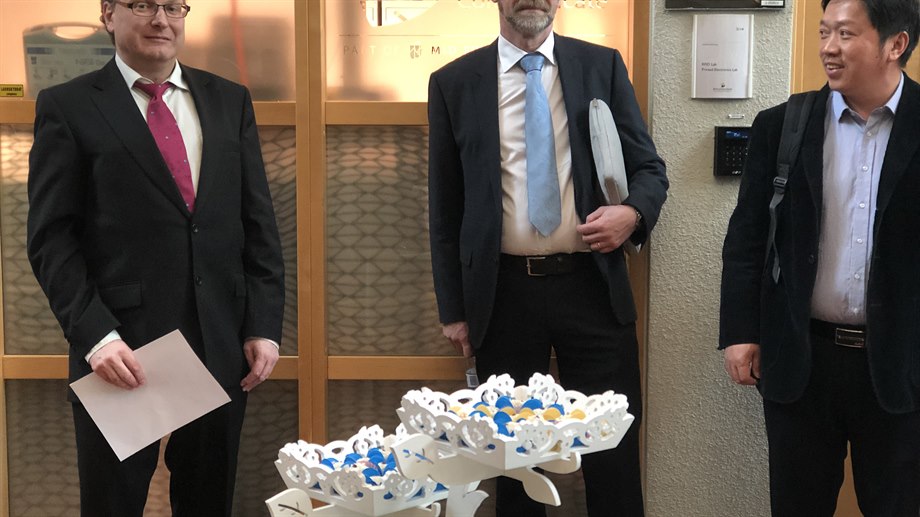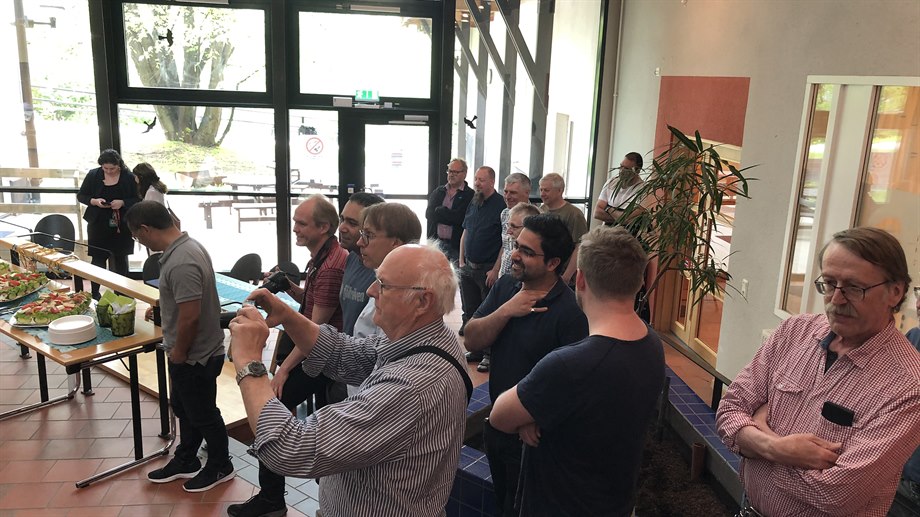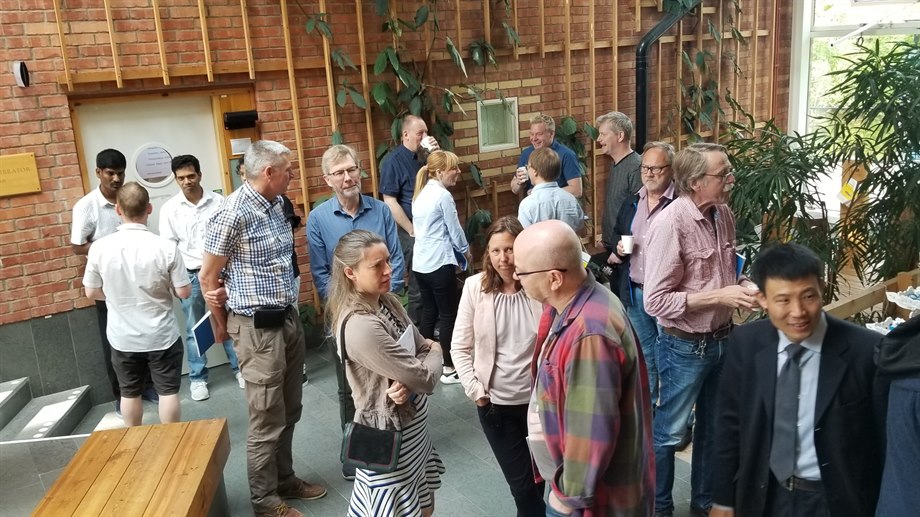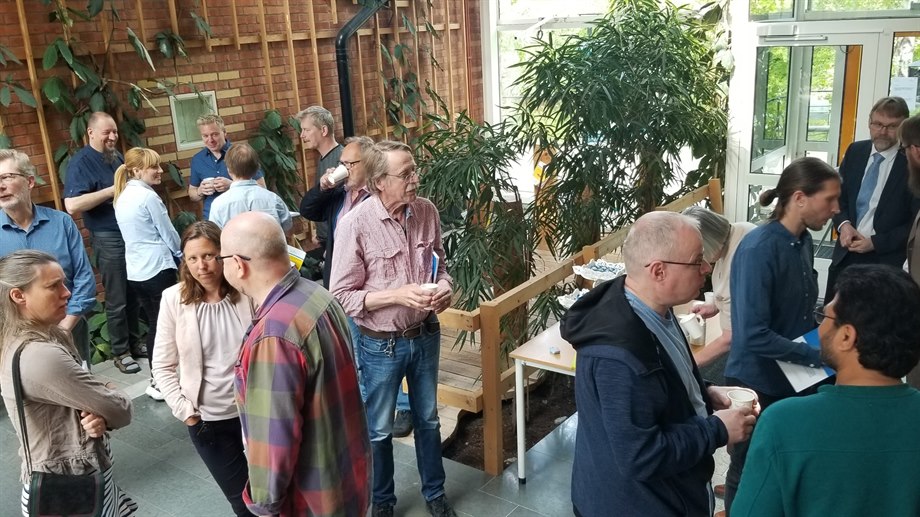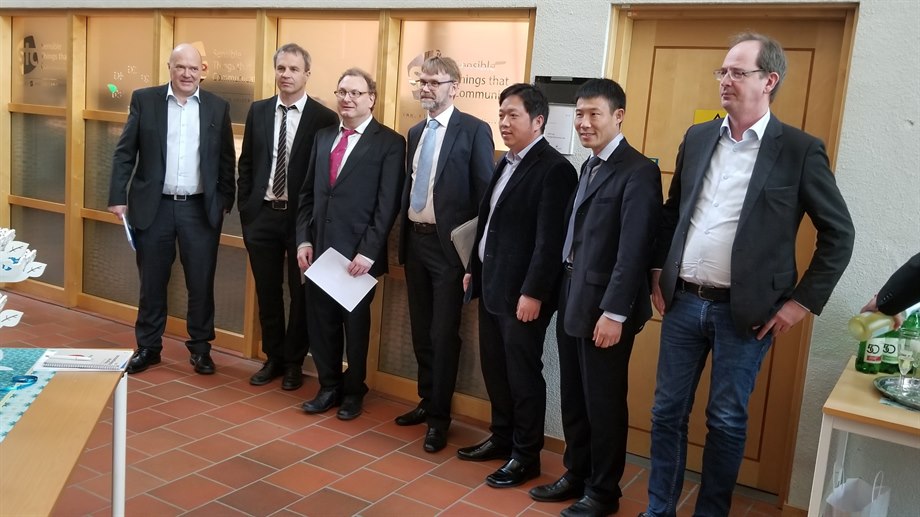av
Martin Olsen is new Doctor in Engineering Physics
On June 5th Martin Olsen presented his Doctoral Thesis in Engineering Physics and he passed. Congratulations Martin! Here are some photos from the day.
The Title of the Thesis
Nanomechanics – Quantum Size Effects, Contacts and Triboelectricity
Supervisors
Docent Jonas Örtegren
Professor Håkan Olin
Professor Per Gradin
Associate Professor Peter Glans
External Reviewer
Professor Rusen Yang
Examining Committé
Professor Bengt Oelmann Professor Nils Almqvist Docent Yijun Shi
Abstract
Nanomechanics is different from the mechanics that we experience in everyday life.
At the nano-scale, typically defined as 1 to 100 nanometers, some phenomena are of crucial importance, while the same phenomena can be completely neglected on a larger scale. For example, the feet of a gekko are covered by nanocontacts that yield such high adhesion forces that the animal can run up on walls and even on the ceiling. At small enough distances, matter and energy become discrete, and the description of the phenomena occurring at this scale requires quantum mechanics.
However, at room temperature the transitions between quantized energy levels may be concealed by the thermal vibrations of the system. As two surfaces approach each other and come into contact, electrostatic forces and van der Waals forces may cause redistribution of matter at the nano level. One effect that may occur upon contact between two surfaces is the triboelectric effect, in which charge is transferred from one surface to the other. This effect can be used to generate electricity in triboelectric nanogenerators (TENGs), where two surfaces are repeatedly brought in and out of contact, and where the charge transfer is turned into electrical energy.
This thesis concerns nanomechanics addressing whether quantum mechanics play a role in elastic deformation, as well as various mechanical aspects of nanocontacts including electric charging. The objectives are to contribute to the understanding when quantum effects are of importance at the nanolevel, increase the fundamental understanding of the mechanisms responsible for triboelectric phenomena and apply the triboelectric effect to a wind harvesting device.
For more insight into whether quantum effects are of importance in nanomechanics, we use a one dimensional jellium model and the standard beam theory allowing the spring constant of an oscillating nanowire cantilever to be calculated. As the nanowire bends, more electron states fit in its cross section, giving rise to an amplitude dependent resonance frequency of the nanowire oscillations.
Furthermore, a model for electric field induced surface diffusion of adatoms was developed. The model takes electrostatic forces and van der Waals forces into account as a voltage is applied between a scanning tunneling microscope tip and a sample. The calculated force on the adatoms at the surface of the sample, which is stemming from the inhomogeneous electric field and the dipole moment of the adatoms, is relatively small, but due to thermal vibrations adatoms diffuse and form mounds at the sample.
When bringing two different materials into contact, the difference in triboelectric potentials between the materials results in electric charging. To increase the understanding of triboelectricity, a two-level Schottky model, assuming ion transfer, was developed to describe the temperature dependence of the triboelectric effect for a TENG. The two levels correspond to the binding energy for ions on the two surfaces that are brought into contact, where the difference in binding energy enters the Boltzmann distribution. The model describes the decreasing triboelectric effect in TENGs with increasing temperature as described in the literature, and results in a separation energy, which is of the right order of magnitude for physically adsorbed atoms.
It was recently demonstrated that TENGs can convert wind energy into electrical energy. Here, a TENG based on a plastic film fluttering between two copper electrodes was constructed. It was found that the frequency of the the fluttering film increases linearly with the wind speed. TENG:s designed in this way generate electricity already at low wind speed, and we therefore expect such TENGs to be useful both as generators and speed sensors in the future.
While quantum mechanics is of importance in a limited number of nanomechanical systems, nanocontacts have a broader meaning, and are crucial for the understanding of triboelectric phenomena. We anticipate that the findings in this thesis will contribute to a better understanding of nanomechanics, in particular the mechanism of triboelectricity.
